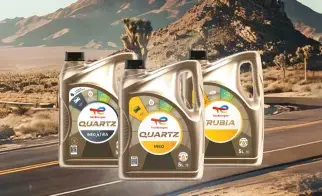Consumables like motorcycle lubricants and brake fluids are typically focused on by bike owners wanting to enhance the performance of their vehicles, fine-tune their maintenance, or cut their running costs, but motorcycle coolant is just as important.
In this guide, we explore all aspects of motorcycle engine coolant, including what it is and its role in the engine, how to change it, which is the best motorcycle coolant to choose, whether it’s the same as car coolant, and how to store it. By the end of the article, you’ll be a fully-fledged expert on this crucial fluid.
What is motorcycle coolant? What does it do?
Motorcycle coolant is a fluid used to moderate heat within your motorbike’s engine. A mixture of antifreeze and water, it has higher boiling and freezing points than water, can cool more effectively than air, and is much less viscous than oil, making it ideal for vehicular cooling systems.
These benefits allow motorcycle engine coolant to circulate throughout the engine’s cooling system and draw heat away from components and other fluids such as engine oil. In doing so, it reduces the risk of these parts being affected by extreme heat and cold.
The specific effects can include issues such as corrosion, mechanical wear, mechanical seizure, or sludge and deposit formation. And in bikes, motorcycle coolant is also used to heat carburettors and improve general cold weather engine performance.
How can you top up or change your motorcycle engine coolant?
It’s advised that you change your motorcycle engine coolant every one to two years, as if it’s left any longer, it can lose some of its water content or otherwise deteriorate in quality, harming its effectiveness and putting your bike at risk. The answer is to change or top up your coolant, though if you are not used to car maintenance, it’s always best to leave the job to a professional.

Note: Find a disposal service near you.
Which is the best motorcycle coolant for your bike?
Ultimately, the best motorcycle coolant for your motorbike is the one recommended by your manufacturer for your specific model. You can find out this information in your bike’s owner’s handbook, but if that isn’t to hand, then use TotalEnergies’ LubAdvisor tool to quickly find out which oils and fluids - coolant included - are best-suited to your bike.
Use LubAdvisor to find your coolant
Can you use car and motorcycle coolant interchangeably?
Like motorcycle oil, motorcycle engine coolant is specially designed to be used with bikes, which means it’s not usually a good idea to simply pour in some car coolant when your bike coolant reservoir is low.
That’s because motorcycle coolants are designed to be compatible with aluminium engines. They also lack the phosphates and silicates sometimes found in car coolants which can damage seals and lead to deposit formation that reduces heat transfer.
They are also typically formed from non-toxic propylene glycol, as opposed to car coolants, which are made from ethylene glycol, toxic to humans and animals. That said, if your bike handbook specifically recommends an ethylene glycol-based motorcycle coolant, then you should be fine using it in your car. To be sure, however, check with the coolant producer and your vehicle manufacturer.
How to store motorcycle coolant
It’s a good idea to keep some motorcycle engine coolant to hand just in case you need to top up your radiator. To store it correctly, place it in a cool, dry place away from direct sunlight, and in a place where it’s unlikely to fall, be spilled, or be handled by children.
You might also be interested in

Find the right oil for my car

Buy our engine oils

How to guides
